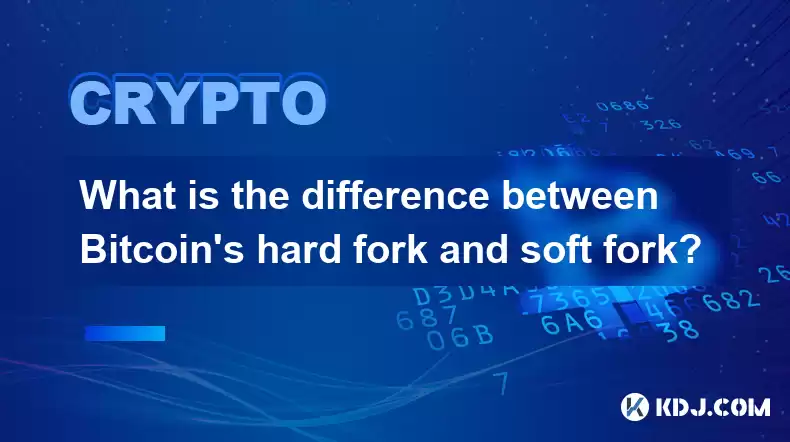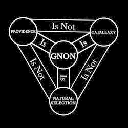-
 Bitcoin
Bitcoin $118400
0.47% -
 Ethereum
Ethereum $3836
2.20% -
 XRP
XRP $3.157
2.98% -
 Tether USDt
Tether USDt $0.9999
-0.03% -
 BNB
BNB $801.5
1.31% -
 Solana
Solana $180.9
2.07% -
 USDC
USDC $0.9999
-0.02% -
 Dogecoin
Dogecoin $0.2225
2.50% -
 TRON
TRON $0.3285
-1.02% -
 Cardano
Cardano $0.7789
2.60% -
 Hyperliquid
Hyperliquid $43.60
2.39% -
 Sui
Sui $3.892
4.41% -
 Stellar
Stellar $0.4229
3.34% -
 Chainlink
Chainlink $18.01
3.98% -
 Hedera
Hedera $0.2745
6.77% -
 Bitcoin Cash
Bitcoin Cash $582.3
3.38% -
 Avalanche
Avalanche $23.77
1.04% -
 Ethena USDe
Ethena USDe $1.001
0.01% -
 Toncoin
Toncoin $3.493
3.59% -
 Litecoin
Litecoin $110.0
2.48% -
 UNUS SED LEO
UNUS SED LEO $8.936
-0.37% -
 Shiba Inu
Shiba Inu $0.00001304
2.49% -
 Uniswap
Uniswap $9.999
1.09% -
 Polkadot
Polkadot $3.897
3.26% -
 Monero
Monero $308.6
-0.83% -
 Dai
Dai $0.9999
-0.01% -
 Bitget Token
Bitget Token $4.504
-0.04% -
 Pepe
Pepe $0.00001154
2.95% -
 Cronos
Cronos $0.1471
3.06% -
 Ethena
Ethena $0.6691
19.53%
What is the difference between Bitcoin's hard fork and soft fork?
Bitcoin hard forks create new cryptocurrencies via incompatible protocol changes, splitting the blockchain, while soft forks are backward-compatible upgrades, smoothly integrating new rules without network division.
Mar 04, 2025 at 03:42 pm

Key Points:
- Hard forks create entirely new cryptocurrencies, resulting in two separate blockchains. They require all nodes to upgrade their software. Failure to upgrade results in being left on the old chain.
- Soft forks are backward compatible. Nodes running old software can still validate blocks created by nodes running the new software. They introduce changes gradually, making them less disruptive.
- The primary difference lies in backward compatibility and the resulting impact on the network. Hard forks are more significant and potentially contentious, while soft forks are less disruptive upgrades.
What is the difference between Bitcoin's hard fork and soft fork?
Understanding the difference between a hard fork and a soft fork in the context of Bitcoin is crucial for navigating the complexities of cryptocurrency. These terms refer to different methods of upgrading the Bitcoin protocol, each with distinct consequences. The core distinction lies in backward compatibility.
Hard Forks: A Clean Break
A hard fork fundamentally alters the Bitcoin protocol in a way that renders older software incompatible with the new rules. This creates a branching point in the blockchain, resulting in two separate and independent cryptocurrencies. Imagine a road splitting into two distinct paths; you can only travel one path, and the other becomes a completely separate route.
To illustrate, consider the Bitcoin Cash (BCH) hard fork. Disagreements regarding block size led to a split, creating BCH as a separate cryptocurrency. Miners and users had to choose which chain to support. Those who remained on the original Bitcoin chain continued to use the old rules, while those who adopted the new rules mined and transacted on the BCH chain. The split created two distinct cryptocurrencies with their own market values and functionalities.
The process of a hard fork typically involves a significant upgrade to the Bitcoin software. All nodes on the network must update their software to the new version to participate in the new blockchain. Nodes that fail to upgrade become isolated, operating on the older, now-abandoned, chain. Hard forks are often controversial and can lead to significant community division.
Soft Forks: A Gradual Transition
In contrast to hard forks, soft forks introduce changes that are backward compatible. Nodes running the older software can still validate blocks created by nodes running the new software. This means that the network doesn't split, and there's no creation of a new cryptocurrency. It's more like gradually improving a road rather than building a completely new one.
A soft fork is essentially a gradual upgrade. The new rules are introduced, but the old rules remain valid. This ensures that the network remains unified and avoids the contentious splits characteristic of hard forks. The adoption of Segregated Witness (SegWit) in Bitcoin was a successful example of a soft fork. It improved transaction efficiency and scalability without requiring a hard fork and its associated disruption.
The implementation of a soft fork generally requires a majority of miners to upgrade their software to the new version. Once a sufficient percentage of miners adopt the upgrade, the new rules become the standard. This gradual transition minimizes disruption and ensures network stability.
The Crucial Difference: Backward Compatibility
The fundamental difference between hard and soft forks boils down to backward compatibility. Hard forks lack backward compatibility, resulting in a split blockchain and the creation of new cryptocurrencies. Soft forks, on the other hand, maintain backward compatibility, allowing older software to continue validating new blocks, thus avoiding a network split.
This difference significantly impacts the network's stability and the potential for conflict within the community. Hard forks are inherently more disruptive and often stem from significant disagreements regarding the direction of the cryptocurrency's development. Soft forks, in contrast, offer a more streamlined and less contentious path for upgrading the protocol.
Frequently Asked Questions:
Q: Can I lose my Bitcoin during a hard fork?
A: You won't directly lose your Bitcoin during a hard fork, but you might lose access to the new cryptocurrency created by the fork if you don't take the necessary steps to claim your coins on the new blockchain. You'll need to secure your private keys and use compatible wallets to access the new cryptocurrency.
Q: Are all hard forks successful?
A: No. Some hard forks fail to gain sufficient support and adoption, resulting in the new cryptocurrency having little or no value. The success of a hard fork often depends on community consensus and the perceived value of the changes implemented.
Q: What are the advantages of a soft fork over a hard fork?
A: Soft forks are less disruptive, easier to implement, and less likely to cause network divisions. They allow for a more gradual and smoother transition to improved functionality.
Q: Can a soft fork be reversed?
A: Yes, a soft fork can be reversed, unlike a hard fork. If the new rules prove problematic, the network can revert to the old rules without significant disruption.
Q: Are there risks associated with soft forks?
A: While generally less risky than hard forks, soft forks can still encounter issues. If there are bugs in the new code, it could affect the network's stability. Furthermore, incomplete adoption of the upgrade by miners could also cause problems.
Q: How do I know if a fork is a hard fork or a soft fork?
A: The best way to determine the type of fork is to consult official announcements and technical documentation from the developers of the cryptocurrency. This information will clearly outline the changes being implemented and their impact on the network's compatibility.
Disclaimer:info@kdj.com
The information provided is not trading advice. kdj.com does not assume any responsibility for any investments made based on the information provided in this article. Cryptocurrencies are highly volatile and it is highly recommended that you invest with caution after thorough research!
If you believe that the content used on this website infringes your copyright, please contact us immediately (info@kdj.com) and we will delete it promptly.
- Ozak AI: Can This Underdog Crypto Achieve a Bull Run to $1?
- 2025-07-31 22:30:12
- Coinbase Breach: Navigating Insider Risk and Bolstering Security
- 2025-07-31 23:11:55
- Bitcoin Rebounds, WeWake Presale Gains Traction: What's the Buzz?
- 2025-07-31 22:30:12
- Bitcoin, Altcoins, and Volume Watchlists: Decoding the Crypto Landscape
- 2025-07-31 23:11:55
- Tron, Fartcoin, and BlockchainFX: What's Trending (and What's Not) in the Crypto World
- 2025-07-31 21:32:19
- Bitcoin, Corporate Investments, and Sustainability: A New Era or Fleeting Fad?
- 2025-07-31 20:50:14
Related knowledge

What is the significance of the 21-week EMA in a Bitcoin bull market?
Jul 10,2025 at 06:56pm
Understanding the 21-Week EMA in Cryptocurrency AnalysisThe 21-week Exponential Moving Average (EMA) is a technical indicator widely used by traders a...

How to identify a volatility contraction pattern on Bitcoin using indicators?
Jul 07,2025 at 07:28am
What is a Volatility Contraction Pattern in Bitcoin Trading?A volatility contraction pattern refers to a phase where the price movement of an asset, s...

Do indicators work better on a logarithmic or linear scale for Bitcoin's long-term chart?
Jul 08,2025 at 01:42pm
Understanding Chart Scales in Cryptocurrency TradingIn cryptocurrency trading, particularly for analyzing Bitcoin's long-term trends, chart scales pla...

What is the Woodies CCI indicator and can it be used for Bitcoin?
Jul 04,2025 at 05:14pm
Understanding the Woodies CCI IndicatorThe Woodies CCI indicator is a variation of the traditional Commodity Channel Index (CCI), which was originally...

How to use indicators to trade the opening range breakout for Bitcoin CME futures?
Jul 05,2025 at 07:35pm
What Is the Opening Range Breakout Strategy?The opening range breakout (ORB) strategy is a popular trading technique used in both traditional markets ...

How to use the Relative Vigor Index (RVI) for Bitcoin trading?
Jul 07,2025 at 02:00pm
Understanding the Relative Vigor Index (RVI)The Relative Vigor Index (RVI) is a technical analysis tool used to assess the strength of price movements...

What is the significance of the 21-week EMA in a Bitcoin bull market?
Jul 10,2025 at 06:56pm
Understanding the 21-Week EMA in Cryptocurrency AnalysisThe 21-week Exponential Moving Average (EMA) is a technical indicator widely used by traders a...

How to identify a volatility contraction pattern on Bitcoin using indicators?
Jul 07,2025 at 07:28am
What is a Volatility Contraction Pattern in Bitcoin Trading?A volatility contraction pattern refers to a phase where the price movement of an asset, s...

Do indicators work better on a logarithmic or linear scale for Bitcoin's long-term chart?
Jul 08,2025 at 01:42pm
Understanding Chart Scales in Cryptocurrency TradingIn cryptocurrency trading, particularly for analyzing Bitcoin's long-term trends, chart scales pla...

What is the Woodies CCI indicator and can it be used for Bitcoin?
Jul 04,2025 at 05:14pm
Understanding the Woodies CCI IndicatorThe Woodies CCI indicator is a variation of the traditional Commodity Channel Index (CCI), which was originally...

How to use indicators to trade the opening range breakout for Bitcoin CME futures?
Jul 05,2025 at 07:35pm
What Is the Opening Range Breakout Strategy?The opening range breakout (ORB) strategy is a popular trading technique used in both traditional markets ...

How to use the Relative Vigor Index (RVI) for Bitcoin trading?
Jul 07,2025 at 02:00pm
Understanding the Relative Vigor Index (RVI)The Relative Vigor Index (RVI) is a technical analysis tool used to assess the strength of price movements...
See all articles

























































































